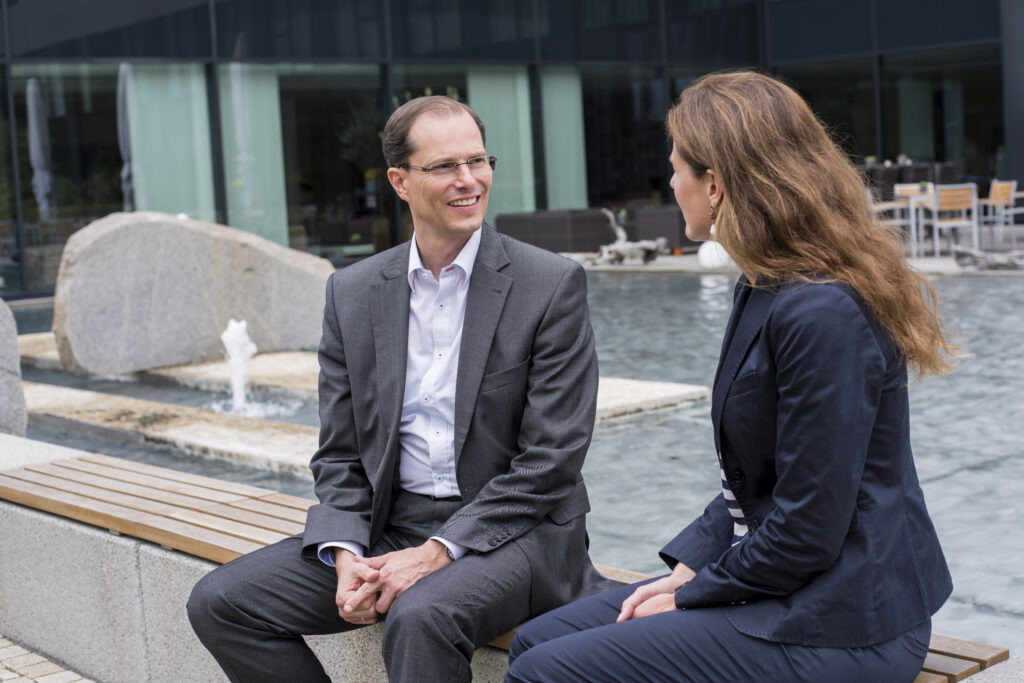Challenge 1: The political system and its culture-shaping influence
While the introduction of a first approach to statutory health insurance is being hotly debated in the U.S., in Germany every gap in coverage, no matter how small, is increasingly being closed with state regulation. No evaluation is to be made at this point.
But in a discussion with a renowned cultural scholar, it became clear that Americans are not at all concerned with health insurance per se, but with the paternalism of government and the forced distribution of money into a system. This one example already shows how differently we tick in the world and how strongly we have internalized our German thoroughness and social justice. We no longer question whether overprotection by the state does not also prevent us from taking responsibility for our own lives and prosperity. At the European level, these tendencies are cumulative and we see that even “philistines” loyal to the line are revolting against them. Far from a political debate, it must be seen that Next Leadership also means questioning habitual thought patterns, and in the intercultural context this can be practiced very well, provided one is open to other points of view.[nbsp]
In her recent article (“Spielwiese oder Durchbruch”), Roswitha A. van der Markt identified an important role model obstacle to next leadership: the government in Germany, which instead of initiating reforms for a sustainable Germany is fighting over power and posts.
Challenge 2: Lack of suffering or perspective
Change requires suffering or positive future prospects. Either the current pain outweighs the energy expenditure of change, or the prospect of a better future generates more pull energy than change effort. For the most part, companies in Germany are doing well; they are still successful with the old patterns. Why change anything?
In addition, the prospects are sometimes so uncertain that there is no purpose in sight as an alternative that generates enough energy for change.[nbsp]
In his bestseller “The Road to the Best”, Jim Collins pointed out that good is the enemy of the best and in his empirical study found only a few companies that were able to maintain a top result for at least 15 years, i.e. were sustainably successful. Incidentally, among the success factors, technological change hardly played a role in the transformation to a top company. Rather, the leadership qualities were decisive. Collins discovered leadership approaches that are popular in today’s New or Next Leadership debate as early as 2001 among the top companies he studied, such as “leadership ambition doesn’t start with a vision. It begins by working with the right people to analyze the current situation and develop a vision.” (Jim Collins “The Way to the Best” 2011, p. 109)
If you are doing too well, the pain of losing what you have achieved is greater than the emotional gain of gaining something new. In practice, this means that the combination of today’s success coupled with a lack of perspective for the future, which must offer more than just achieving even higher returns, is highly dangerous for any change movement and thus also for Next Leadership. The Nokia example shows how this can end.
Challenge 3: The managed employees
Whereas yesterday employees were still expected to work to rule or to consult their superiors on every decision, today they are suddenly expected to make decisions on their own or as part of a team, to take responsibility for themselves and their results, and to produce creative innovations. Certainly exaggerated, but the workforce of a company is a “heterogeneous bunch” and not everyone is immediately able to manage their area of responsibility in a highly motivated, sense-inspired and self-responsible manner. The complex dynamic modern world requires an equally mental and dynamic complexity.
A not inconsiderable proportion of people who have been socialized differently have their problems with this. We all know the formula “love it, change it or leave it” The “change it” is left out by many people and instead replaced by a “suffer it”. But Prof. Scholz, for example, also paints a rather differentiated picture for Generation Z, which nurtures the hope of faster adaptation to current change, which does not necessarily make Next Leadership any easier. There is a high desire for freedom and autonomy, but at the same time a lack of orientation is apparent, which is why many young people long for more security and guidelines than the generations before them. The bottom line is that not all employees can be lumped together, and not everyone wants to pursue self-fulfillment through work.
Companies often approach their employees and managers with a very skill-oriented personnel development approach that teaches new methods and tools, but does not change the mindset by any means. Classical competence training is primarily aimed at horizontal development, whereas the company’s own transformation can only be triggered with vertical development measures. This is time-consuming, costs time, patience, and money, and most people prefer to resort to frontal and, if possible, digitally designed learning impulses instead of dealing with people, their perception, their evaluation patterns, and their self-reflection. If, at the end of the day, all that matters is that people have to function the way the company needs them to, then Next Leadership approaches will quickly end up in the category of “instrumental manipulation” and will not find deeper acceptance.
Challenge 4: Appropriate trust
In the course of New Work and Next Leadership, one thing above all is required: Trust. More trust in employees, trust work time, trust in teams’ ability to self-regulate, and more. But can trust be demanded or even prescribed?
Trust means letting go, it means giving up control and power. Many leaders find this difficult, especially in corporate contexts that have historically been built on strong control. Can you suddenly just trust and then everything goes in the right direction?
Trust is essentially formed from the two factors of integrity and confidence and usually has to be earned. When competent people focus primarily on their own advantage, the integrity that justifies trust is lacking. If people of integrity do not have the competence for the requirements set, trust is also difficult.
In this respect, the issue of trust must be built on a solid foundation of strong corporate values, transparent “rules of the game,” and realistic expectations for results that neither under- nor overburden the company. Is a team able to define it in a self-organized way without self-interest?
When it comes to trust, you can quickly fall off the horse on both sides. On the one hand, trust requires courage for a leap of faith, which can then only be proven later. On the other hand, trust needs liberation from a naïve do-gooder thinking that everyone is already somehow doing the best for the company and their colleagues.
Nassim Nicholas Taleb writes in his book “Antifragility” accordingly (p. 198) that a naive form of utopia with blindness to history tries to eliminate greed and other human weaknesses rationally, which leads to a fragilization of society. However, humanity remains as it is with these bad and evil sides and the last thing we need are more moralizers who want to call people to reason. In his view, it is more practicable to arrange conditions in such a way that greed and other human imperfections cannot harm them.
The compatibility of individual and corporate goals is easily overestimated. Not all of them can always be taken along or go along by themselves of course exclusively intrinsically motivated. Not all leaders and managers are willing to give up their power and subordinate themselves to a greater purpose or follow some swarm intelligence.
Challenge 5: Leadership is not just leadership
Leadership has been defined and designed quite one-dimensionally in many organizations in the past. The risk also exists with Next Leadership approaches. A model is selected as the right one and is carried into the organization as simplified as possible. If it does not work then, the next approach is developed. The danger of such models is that they do not leave enough room for diversity in leadership.
What is partly demanded today in terms of leadership qualities for tomorrow is based on an image of leadership that is not relevant for all managers. Not every team leader in an organization needs to be an enterprise leader. There are requirements to provide direction to a small team and others that require vision for an entire organizational area. For some business units, agile network structures and less formalized leadership make sense. Other organizational units require a high level of standardization and process efficiency, where not everyone can let their creative energy flow. Thus, the challenge is different in every company and sometimes even in every unit, and leadership must respond to very different requirements.
Unifying can be certain values and guidelines that are the unifying element in any culture. Therefore, leadership must not only be understood in instrumental terms, but requires principles and an image of humanity for which the company stands. However, it is important to live this and not just leave nice-sounding sentences as empty words.
In my view, a successful example of a modern leadership framework is HHL’s Leipzig Leadership Model, which provides orientation and at the same time encouragement to fill it further with content and is therefore less normative in orientation. Here is contained air to breathe and space to create. In this way, companies could think big in terms of Next Leadership and yet go about implementing it in a very differentiated and considered way.
For further interesting insights please have a look at our news section











